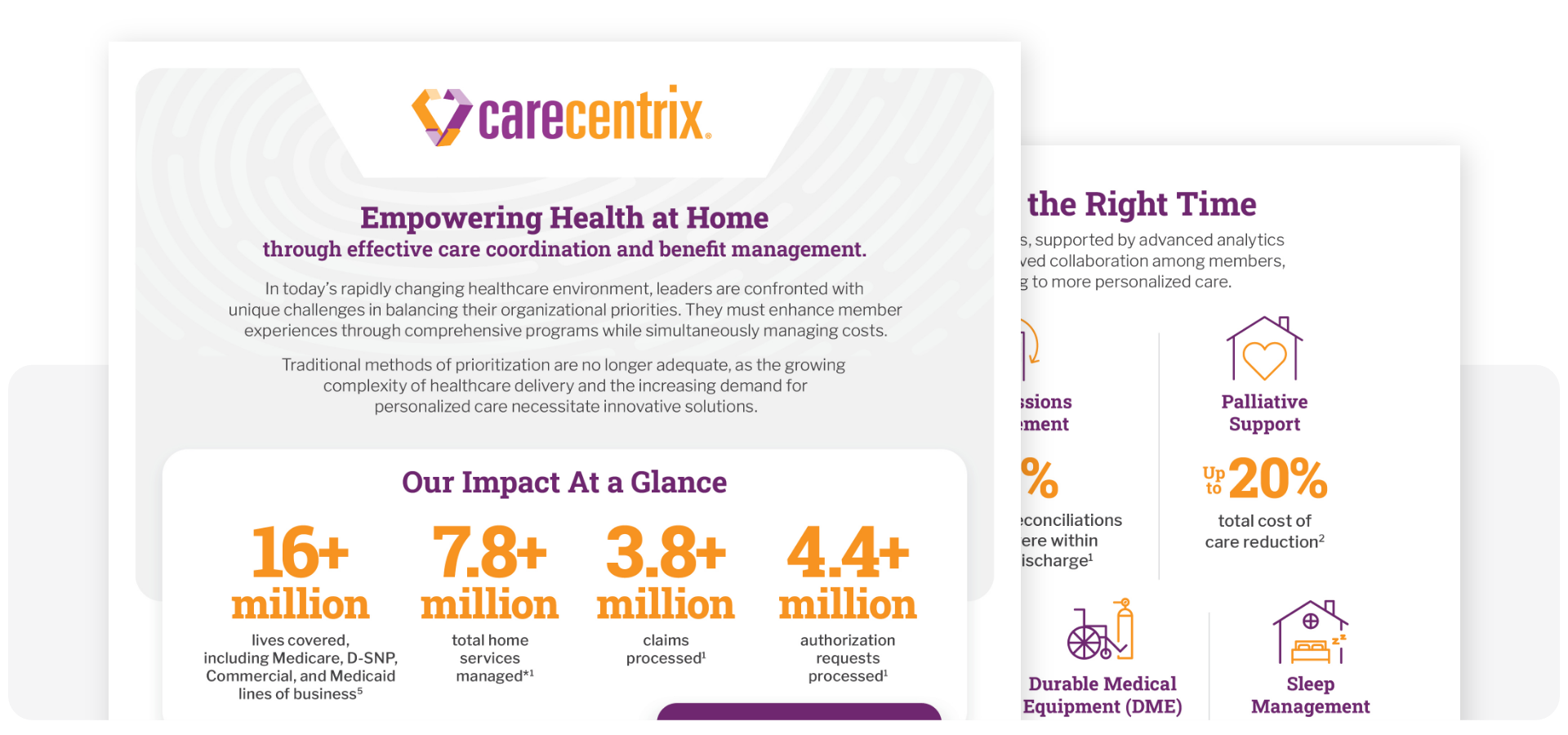
Between the aging Baby Boomer generation and an increased disease burden, chronic disease management is top of mind for payors.
In the U.S., 6 in 10 adults have a chronic disease, while 4 in 10 have two or more.1 Chronic conditions such as heart disease, cancer, stroke, respiratory disease, Alzheimer’s, and diabetes are the leading causes of disability. These common conditions are drivers of rising healthcare costs, contributing to the nation’s $4.1 trillion in annual healthcare expenditures.
These member populations often have multiple care plans and face difficulties related to social determinants of health (SDoH) that contribute to healthcare disparities—making chronic disease management challenging.
“Education, preventative screenings, chronic disease management programs, and care coordination are all essential, particularly during transitions of care,” according to Shawn Johnson, M.D., MBA, Lead Medical Director, CareCentrix. “Yet the path to better engagement, improved health outcomes, and lower costs lies with whole-person approaches to care and meeting members where they are—in their homes and in the community.”
The Complexities of Chronic Disease Management
For members with chronic diseases—especially those who are newly diagnosed—adhering to new care plans, making dietary changes and lifestyle modifications, and taking new medications can be difficult to implement every day.
“Accepting their new reality, understanding what they need to do to manage their conditions and prevent their condition from worsening requires new ways of thinking and making changes that can be challenging,” Johnson said.
The social determinants of health (SDoH), such as lack of access to care, health literacy, economic instability, and food insecurity can all be barriers to making healthy choices and engaging in care as well.
For example, someone who is experiencing financial hardship may not be able to buy fresh groceries for healthy meals and may resort to less expensive fast foods. Similarly, asking members to eliminate traditional foods that are part of their culture isn’t always easy or realistic.
“These unmet social needs must be taken into account and addressed when we’re trying to affect change in those with chronic diseases. But we must take it one step further and truly meet members where they are, which means being able to relate to and empathize with them,” Johnson said.
Multidisciplinary, Whole-Person Care Address Critical Gaps
Addressing chronic disease populations requires a multidisciplinary, whole-person approach that includes primary care physicians, specialists, nurses, social workers, nutritionists, and pharmacists. By leveraging each individual’s area of expertise and working together, members receive the right care and support they need in the home.
Additionally, using a care coordination platform allows the care team to document and access information about all of the care the member receives—enabling complete transparency into the data.
Through in-person and virtual visits, these approaches proactively identify and address unmet clinical and social needs, provide access and education, and connect members to community organizations that provide meals, transportation, and social support, for example. “Education is paramount so health plans need to ensure their members understand their conditions, what they can do to prevent them from progressing, and offer them resources in a way that’s easy for them to access,” Johnson said.
The Home and the Member at the Center of Care
As more care moves away from the doctor’s office, payors are leveraging home and community solutions to improve access, achieve better outcomes, and lower costs.
Home and community care settings offer payors unique opportunities to provide preventative, multidisciplinary, and whole-person care at multiple touchpoints throughout the member journey. With predictive analytics, payors can identify unmet clinical and social needs, educate and engage members, and close gaps in care.
Research suggests that personalized, chronic disease management services delivered in the home can reduce healthcare spending for patients with certain diseases by nearly $30,000 per year.2
“Providing care in the home and extending access to community support means we can reach members who otherwise were not actively pursuing care, address their needs, and guide them to the next best step,” Johnson said.
Sources:
1. “Chronic Diseases in America.” Centers for Disease Control and Prevention, 2022.
2. “Home Care Services Reduce Medicare Spending for 30 Chronic Conditions.” Avalere, 2021.
EDRC 2090





